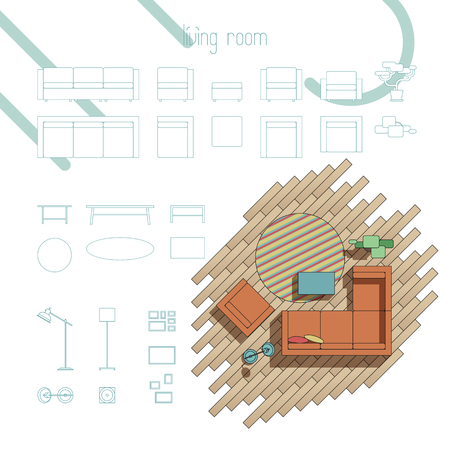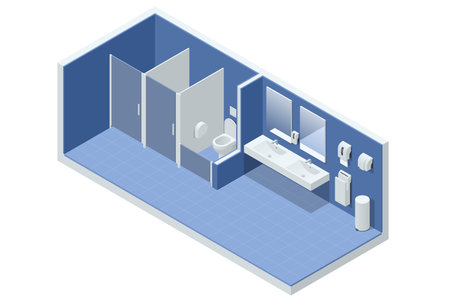Introduction to Loft Bedroom Conversions
In recent years, loft bedroom conversions have become an increasingly popular choice among UK homeowners looking to maximise their living space without the upheaval of moving house. With property prices continually on the rise and the demand for versatile spaces growing, converting a loft into a stylish and functional bedroom offers an appealing solution. This type of renovation not only makes excellent use of previously underutilised space but also provides a cost-effective way to add significant value to your home. Homeowners are drawn to loft conversions for a variety of reasons, from accommodating a growing family or creating a private guest suite, to establishing a tranquil retreat away from the hustle and bustle of daily life. As more people work remotely, the need for adaptable rooms—such as bedrooms with study areas—has further fuelled this trend across the UK. Loft bedroom conversions combine practical benefits with creative design possibilities, making them a smart investment that enhances both lifestyle and property value.
Understanding Planning Permission and Building Regulations
Before you begin transforming your loft into a stylish bedroom, its essential to grasp the legal requirements involved. In the UK, most loft conversions are considered permitted development, which means you may not need to apply for planning permission provided specific criteria are met. However, understanding where permitted development ends and when full planning permission is required can save you time, money, and potential legal headaches.
Permitted Development Rights
Under permitted development rights, many homeowners can convert their lofts without formal planning permission, as long as the conversion stays within certain boundaries. These include restrictions on the volume of the extension, its height, and whether the property is in a conservation area or a listed building. For example, the additional roof space created must not exceed 40 cubic metres for terraced houses or 50 cubic metres for detached and semi-detached properties.
Permitted Development Criteria Table
| Criteria | Description |
|---|---|
| Maximum Roof Addition Volume | 40m³ (terraced), 50m³ (semi/detached) |
| Height Restrictions | No higher than the existing roof ridge |
| Windows/Balconies | No verandas, balconies or raised platforms; side-facing windows must be obscure-glazed and non-opening below 1.7m from floor level |
| Protected Areas | No permitted development in conservation areas or for listed buildings |
| Materials Used | Should be similar in appearance to the existing house |
When Planning Permission is Required
If your loft conversion project does not meet permitted development criteria—such as exceeding allowed volume or altering the roofline significantly—you will need to apply for planning permission through your local authority. This process can take several weeks and involves submitting detailed plans for approval.
Building Regulations Compliance
Regardless of whether you need planning permission, all loft conversions must comply with UK building regulations. These cover structural integrity, fire safety, insulation standards, ventilation, access via stairs, and soundproofing between rooms and floors. You’ll typically need to work with a qualified architect or structural engineer to produce plans that meet these strict standards. Local authority inspectors will visit at key stages to ensure compliance before issuing a completion certificate.
Key Building Regulation Considerations:
- Structural Stability: Reinforcement of joists and load-bearing walls may be necessary.
- Fire Safety: Fire doors, smoke alarms, and proper escape routes are required.
- Insulation & Ventilation: Adequate thermal insulation and natural light/air flow must be ensured.
- Staircase Access: Safe permanent stairs must be installed; retractable ladders do not suffice.
Navigating planning permissions and building regulations early on will help ensure your loft bedroom conversion progresses smoothly while fully adhering to British standards and local council requirements.

3. Design Considerations for Loft Bedrooms
When planning a loft bedroom conversion in the UK, thoughtful design is essential to make the most of your new living space. One of the primary considerations is maximising space. British lofts often have sloped ceilings and awkward angles, so opting for bespoke storage solutions, such as built-in wardrobes and under-eaves drawers, can help you utilise every inch efficiently. Choosing multi-functional furniture like ottoman beds or fold-away desks also keeps the room uncluttered and versatile.
Natural Light
Natural light is a key factor in creating an inviting loft bedroom. Installing Velux or dormer windows will flood the space with sunlight, making it feel larger and more welcoming. In British homes, where daylight hours can be limited in winter, consider positioning windows strategically to capture maximum light throughout the day. Skylights are a popular choice but remember to include blackout blinds for restful sleep.
Insulation Matters
Proper insulation should never be overlooked in a loft conversion, particularly given the UK’s variable climate. Upgrading roof and wall insulation not only keeps your new bedroom warm during colder months but also improves energy efficiency, reducing heating bills. Pay attention to soundproofing too—thicker insulation can help minimise noise from rain or traffic.
Practical Layouts and Features
The layout of your loft bedroom should reflect both comfort and practicality. Due to headroom constraints in many British properties, position beds away from low eaves and place taller furniture where ceiling height is greatest. Consider en-suite bathrooms if space allows, as this adds both convenience and value. Incorporate lighting options like spotlights or wall sconces to brighten darker corners without taking up precious floor space.
Ultimately, tailoring your loft bedroom design to fit the quirks of British architecture ensures a functional, stylish, and comfortable retreat at the top of your home.
4. Popular Loft Bedroom Conversion Styles
When it comes to loft bedroom conversions in the UK, homeowners are increasingly seeking both style and practicality. The design chosen can significantly influence not only the aesthetic appeal but also the functionality of the new space. Here, we explore some of the most popular and trending styles for loft bedrooms across Britain.
Minimalist Loft Bedrooms
The minimalist approach remains a favourite in many UK homes, particularly those aiming for a bright, uncluttered environment. This style emphasises clean lines, neutral colour palettes, and clever storage solutions that make the most of limited loft space. Minimalist lofts often feature skylights or large windows to maximise natural light, creating an airy and tranquil atmosphere perfect for relaxation.
Industrial Loft Bedrooms
Inspired by converted warehouses and urban flats, industrial loft bedrooms are gaining popularity for their bold character and raw materials. Exposed brickwork, metal beams, and reclaimed wood are common features, offering a sense of rugged charm. This style works especially well in period properties or city homes where original architectural details can be celebrated rather than concealed.
Traditional Loft Bedrooms
For those who prefer a classic British look, traditional loft bedrooms blend comfort with timeless elegance. Think soft furnishings, muted tones, and perhaps even exposed timber rafters for added warmth. This approach is ideal for Victorian or Edwardian homes where maintaining period features can add significant value and character to the property.
Style Comparison Table
| Style | Main Features | Best Suited For |
|---|---|---|
| Minimalist | Neutral colours, simple furniture, maximised light | Modern homes, small loft spaces |
| Industrial | Exposed brickwork, metal accents, open layouts | Urban properties, converted warehouses |
| Traditional | Classic décor, soft textures, period features | Victorian/Edwardian houses |
Selecting Your Style
The right style for your loft bedroom conversion will depend on your personal taste, the existing architecture of your home, and how you intend to use the space. Whether you gravitate towards minimalism’s simplicity or the cosiness of tradition, there’s a loft bedroom style perfectly suited to every British household.
5. Benefits of Adding a Loft Bedroom
Increase in Property Value
One of the most compelling reasons to undertake a loft bedroom conversion is the potential uplift in your home’s market value. In the UK, properties with additional bedrooms—especially those that make creative use of existing space—are consistently sought after by buyers. According to several property experts, a well-executed loft conversion can boost your home’s value by up to 20%. This makes it a shrewd investment, whether you’re planning to sell in the near future or simply want to enhance your long-term asset.
Creation of Extra Living Space
With many British homes constrained by limited floor area, making the most of vertical space is key. A loft bedroom provides a practical solution for growing families, those working from home, or anyone needing an extra guest room. Unlike moving house or extending at ground level, converting your loft typically doesn’t eat into your garden or outdoor space—a significant advantage given the premium placed on private gardens in the UK.
Improved Energy Efficiency
Modern loft conversions are subject to strict building regulations concerning insulation and energy performance. By upgrading your loft during the conversion process—installing quality insulation, double-glazed windows, and draught-proofing—you can significantly improve your home’s overall thermal efficiency. This not only creates a comfortable living environment all year round but can also lead to lower energy bills and a reduced carbon footprint.
Enhanced Versatility
A loft bedroom is remarkably versatile; it can serve as a master suite, child’s bedroom, private study, or even a stylish retreat for guests. With clever design choices, sloped ceilings and awkward nooks become charming features rather than limitations.
Minimal Disruption Compared to Extensions
Compared to traditional rear or side extensions, loft conversions generally cause less disruption to day-to-day life and require fewer structural alterations to your home’s footprint. For many homeowners across Britain’s tightly packed urban areas, this makes loft conversions an especially attractive choice.
Summary
In summary, adding a loft bedroom offers a trifecta of benefits: it increases property value, delivers much-needed extra space without sacrificing gardens or driveways, and enhances energy efficiency. These advantages make it one of the smartest and most rewarding ways to upgrade your British home.
6. Common Challenges and How to Overcome Them
Loft bedroom conversions are a popular choice across the UK, but homeowners often encounter specific challenges unique to British properties. Addressing these issues early in the planning stage is key to ensuring a successful and comfortable conversion.
Low Headroom
Many UK lofts, particularly in Victorian or Edwardian homes, feature limited head height due to traditional roof structures. This can make the new bedroom feel cramped or impractical.
Solution:
Consider installing dormer windows, which not only increase usable headroom but also introduce natural light and ventilation. For severely restricted spaces, lowering the ceiling of the rooms below or choosing bespoke fitted furniture that maximises every inch can make a significant difference.
Restricted Access
Accessing a newly converted loft bedroom isn’t always straightforward. Many older properties weren’t designed with future staircases in mind, so finding space for safe and legal access can be a challenge.
Solution:
A space-saving staircase—such as a spiral or alternating tread design—can be an effective solution where space is tight. However, always ensure your chosen option meets UK Building Regulations for safety. Consulting with an experienced architect or builder will help you identify the best placement and type of staircase for your property.
Lack of Natural Light
Another common issue is insufficient daylight, especially if existing rooflines are shallow or overshadowed by neighbouring buildings.
Solution:
Rooflights (Velux windows) or dormer windows can dramatically improve both brightness and ventilation. Skylights positioned strategically over sleeping areas or workspaces will make the loft feel more inviting and spacious. Remember to consider blinds or shutters for privacy and light control.
Insulation and Temperature Control
Lofts are prone to extremes of temperature: too cold in winter, too hot in summer.
Solution:
Investing in high-quality insulation for both the roof and walls is essential. Modern insulation materials can be retrofitted with minimal loss of space. Additionally, consider installing efficient heating options—like radiators linked to your central system or underfloor heating—and ensure there’s adequate ventilation for comfort year-round.
Summary
Tackling these typical challenges with thoughtful planning and professional advice ensures your loft bedroom conversion is practical, stylish, and adds lasting value to your home.
7. Real-Life Examples and Inspirations
One of the most effective ways to envision your own loft bedroom conversion is by exploring real-life case studies from British homes. These inspiring examples highlight both the practical benefits and creative design choices that have transformed underused attic spaces into stunning bedrooms.
Case Study 1: Victorian Terrace in London
This classic Victorian terrace underwent a remarkable transformation when its owners decided to convert the loft into a master bedroom with an en-suite. Retaining original features, such as exposed brickwork and sash windows, they introduced modern touches like skylights and built-in storage. The result is a light-filled sanctuary that balances historic charm with contemporary comfort—a testament to thoughtful planning and sympathetic design.
Case Study 2: Semi-Detached Home in Manchester
In a typical suburban semi-detached house, the homeowners needed extra space for their growing family. By converting the loft, they created two compact yet functional bedrooms, utilising clever built-in wardrobes and under-eaves drawers to maximise every inch. Soft neutral tones and Velux windows ensure the rooms feel airy and inviting, proving that even modest homes can benefit greatly from a loft conversion.
Case Study 3: Countryside Cottage in the Cotswolds
A charming cottage set in the picturesque Cotswolds saw its small, dark attic reimagined as a cosy guest bedroom. The designers embraced the cottage’s character by exposing wooden beams and using natural materials throughout. A Juliet balcony overlooking rolling hills was added, filling the space with natural light and countryside views—perfect for guests seeking tranquillity.
Creative Design Choices
These case studies showcase several inventive solutions common in successful British loft conversions. Sloping ceilings are cleverly accommodated with bespoke fitted furniture; awkward nooks become reading corners or mini home offices. Many projects prioritise sustainable materials and energy efficiency, reflecting a growing trend towards eco-conscious home improvements in the UK.
Takeaway Inspiration
Whether you live in a bustling city terrace or a rural cottage, these examples demonstrate that with careful planning and creative thinking, a loft bedroom conversion can add both value and comfort to your home. Consider how these British success stories could inspire your own project—combining practicality, personality, and respect for your property’s unique character.


